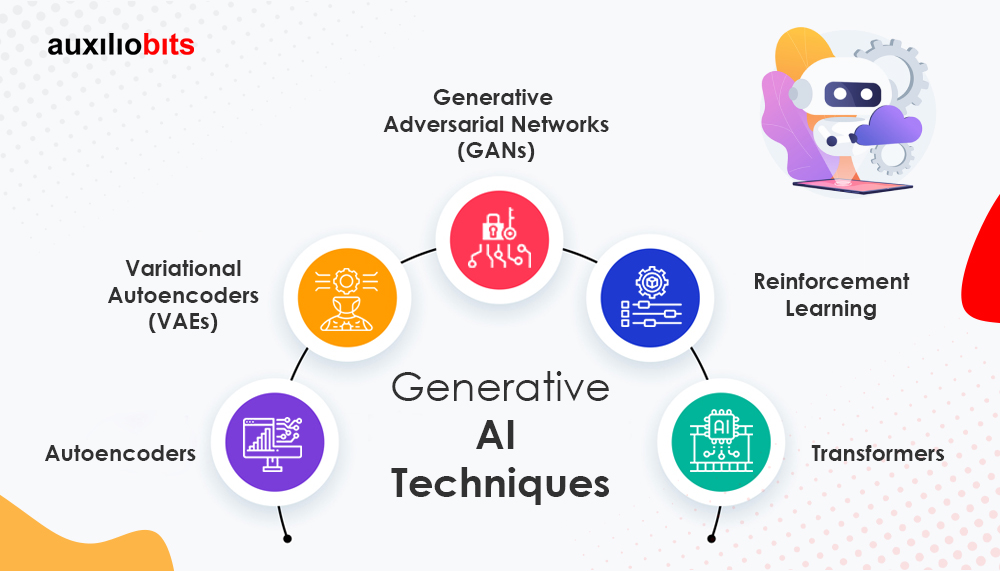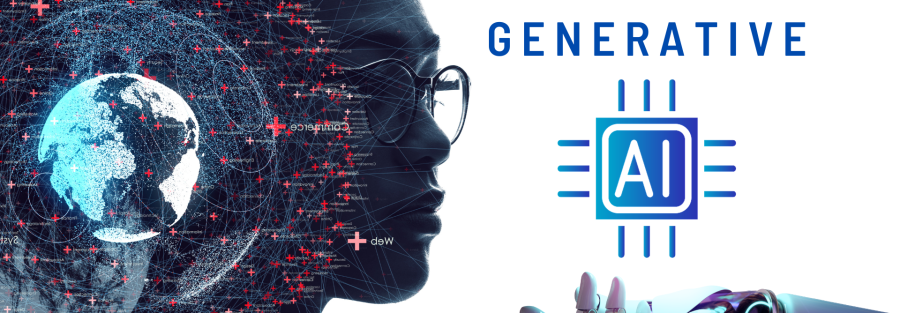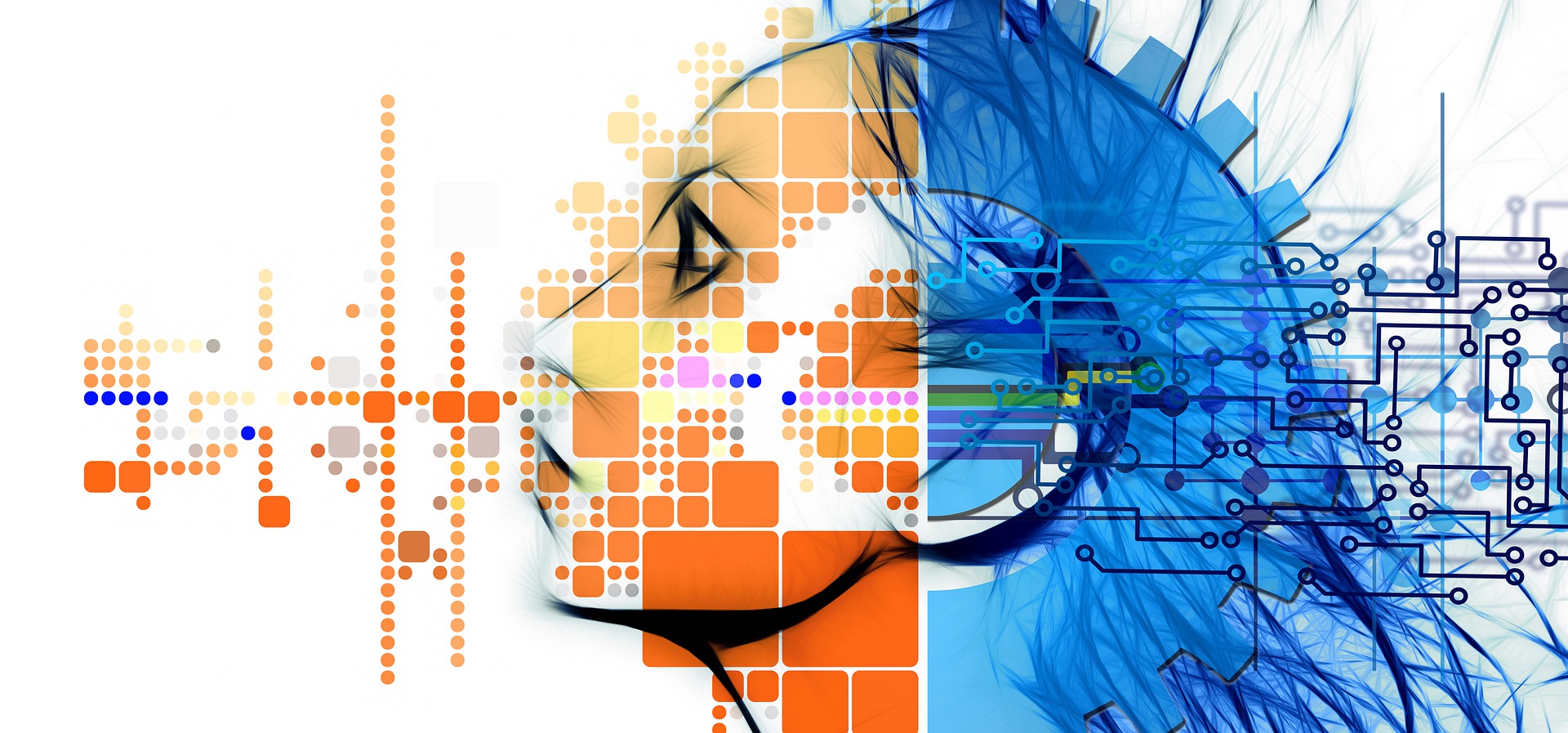Key takeways
- Generative AI - a groundbreaking field that's redefining the boundaries of artificial intelligence.
- Generative AI is experiencing a meteoric rise, capturing the imagination of technologists, artists, and innovators alike.
- Gen AI is widely being deployed in areas such as creative content generation, language processing models, image and video generation, medical and scientific research, and more.
- While Generative AI has the potential to disrupt traditional content generation and research processes, it poses several challenges and ethical considerations that need to be addressed.
- The future possibilities of Generative AI are vast and intriguing. AI systems are expected to become even more creative, understanding nuanced contexts & emotions, besides generating content in multiple modalities, such as text, images, and audio.
Are machines capable of true creativity?
This age-old question has taken on a new dimension with the rise of Generative AI – a groundbreaking field that’s redefining the boundaries of artificial intelligence. In this era where AI systems can generate art, music, and literature that rivals human creations, it’s evident that we’re at the corner of an amazing transformation.
Let’s explore how this technology is not just mimicking human intelligence but developing a new era of intelligent creation.
What Is Generative AI?
Generative AI is a segment of artificial intelligence focused on the art of creation. It allows machines to create things like text, images, music, and other content that resembles human creations. This technology is possible because of generative models, which are essentially algorithms designed to create content.
The growth of Generative AI is evident in the staggering figures. OpenAI introduced GPT-3, a 175 billion-parameter language model. This marked a significant leap in the capabilities of generative AI, enabling it to produce remarkably human-like text. (Source: Springboard)
Evolution Of Generative Models
Generative models have evolved from basic rule-based systems to complex neural networks. Ian Goodfellow introduced GANs, a milestone in generative AI’s history. GANs allowed for the creation of highly realistic data, effectively closing the gap between machine-generated content and human-created content.
The evolution continues. GPT-3, a language model, pushed the boundaries with 175 billion parameters, making it one of the most advanced generative models to date. (Source: TechTarget)
Rise Of Generative AI
Generative AI is experiencing a meteoric rise, capturing the imagination of technologists, artists, and innovators alike. This remarkable technology empowers machines to create content that is not only human-like but often indistinguishable from works produced by human hands. It’s a journey that started with basic generative models and has now led us to the threshold of unimaginable creativity.
Global private investment in AI reached $93.5 billion in 2022, up from $68.1 billion in 2021 which represents an annual growth rate (CAGR) of over 30%. It reflects the surging interest in AI technologies, particularly in the generative domain. (Source: 360 Nautica)
Use Cases Of Generative AI
Creative Content Generation
- Art and Music
Generative AI has opened up a world of possibilities in the realm of art and music. Algorithms are now capable of creating intricate and captivating artworks and composing music that resonates with human emotions. Notably, a digital artwork created by Beeple sold as an NFT for an astonishing $69.3 million. This marked a turning point in recognizing AI-generated art as a genuine form of creative expression. (Source: Forbes)
- Creative Writing
Generative AI, with models like GPT-3, has revolutionized creative writing. It can craft coherent and contextually relevant text, making it a valuable tool for content generation, chatbots, and much more. The impact is profound, with GPT-3 being used by numerous businesses and platforms for content creation.
- Data Synthesis and Augmentation
Generative AI plays a pivotal role in data synthesis and augmentation for machine learning. It can generate synthetic data, improving model training. With augmentation, although the training accuracy was lowered, the model/technologies became more accurate, with validation accuracy increasing by almost 4%. (Source: AmyGB AI)
Language Processing Models
- Language Translation
Generative AI models have revolutionized language translation services. Systems like Google Translate have benefitted from these models, achieving human-level translation accuracy across various languages. The implications for global communication and accessibility are profound.
- Chatbots and Virtual Assistants
The capabilities of chatbots and virtual assistants have advanced significantly with the help of Generative AI. They can now simulate human-like interactions, providing personalized responses and assistance. This has transformative applications in customer service, support, and more.
- Content Generation
Generative AI supports content generation across various industries. INew AI statistics show that 35% of companies are using AI and 42% of companies are exploring AI for its implementation in the future. AI-generated content could account for as much as 90% of online information by 2026, per a study by Europol. This technology is reshaping the content landscape, impacting marketing, journalism, and beyond. (Source: Cross River Therapy, Insider Intelligence)
Image and Video Generation
- Deepfakes
Deepfake technology, a product of Generative AI, has gained prominence. A recent survey on deepfake content reveals that adult content makes up 98 percent of all deepfake videos online. A recent incident occurred with Bollywood and Tollywood star Rashmika, in which someone created a fake video of her and made it go viral on social media. This led to the punishment of the individual responsible for creating Deepfakes with around INR 1 lakh fine and imprisonment. While this raises ethical concerns, it also showcases the potential and power of Generative AI in the world of visual media. (Source: Hindustan Times)
Medical and Scientific Research
- Drug Discovery
Generative AI is significantly accelerating drug discovery. AI-powered systems have identified potential drug candidates, reducing development timelines. Generative AI’s impact on drug discovery is so substantial that by 2028, it is estimated to contribute to a market value of approx. $4.9 billion in the pharmaceutical sector, growing at a CAGR of 40.2% from 2023 to 2028. (Source: Markets and Markets)
- Protein Folding
In the field of bioinformatics, Generative AI is making strides in predicting protein structures. The AlphaFold system, for instance, achieved remarkable success in protein folding predictions. In recognition of this accomplishment, DeepMind was awarded a Breakthrough of the Year by the journal Science in November 2020 for solving the 50-year-old ‘protein-folding problem’. This breakthrough not only revolutionizes our understanding of diseases but also paves the way for targeted drug design and precision medicine. (Source: NewsLaundry)
Generative AI Techniques

- Autoencoders
Autoencoders are designed to encode data into a compressed representation & then decode it back into the original form. This technique is fundamental for data compression, denoising, and feature learning.
- Variational Autoencoders (VAEs)
Variational Autoencoders (VAEs) take autoencoders a step further by introducing probabilistic modeling. VAEs, a critical component of Generative AI, showed remarkable results in various applications, including molecular design and protein folding. As per the report by Markets and Markets, the global AI market is expected to reach $190 billion by 2025, increasing at a CAGR of 36.62%. (Source: IBM)
- Generative Adversarial Networks (GANs)
GANs consist of two neural networks – a generator & a discriminator, that engage in a dynamic battle. The generator creates data, while the discriminator evaluates its authenticity. GANs are instrumental in generating realistic images, videos, and more. GANs have achieved significant milestones, including generating high-resolution images and videos.
- Transformers
The introduction of transformers has transformed the landscape of natural language processing (NLP). Models like GPT-3 and BERT are built on transformer architecture, which allows them to understand context and generate text that is not only coherent but contextually relevant. GPT-3, for example, has a staggering 175 billion parameters, which contributes to its text generation capabilities. (Source: Ido Meiron via LinkedIn)
- Reinforcement Learning
One of the important aspects of Gen AI is reinforcement learning. This technique enables AI agents to make sequences of decisions based on rewards and punishments. Reinforcement learning is pivotal in AI gaming, robotics, and even healthcare. In fact, reinforcement learning has demonstrated its capacity to optimize cancer treatments, achieving better outcomes than human experts in some cases.
Challenges and Ethical Considerations
- Data Privacy and Security
Generative AI often relies on vast datasets to generate content. The collection and usage of personal data raise concerns about privacy and security. Data breaches cost an average of $3.84 million per incident. Ensuring data privacy while harnessing the power of Generative AI is an ongoing challenge. (Source: CSO)
- Bias and Fairness
Generative AI models are vulnerable to the biases present in their training data. These biases can inadvertently perpetuate in various areas of application. For instance, language models may produce biased or discriminatory content. A study found that some AI models demonstrated biases towards gender, race, and other factors. Ensuring fairness and mitigating bias in AI systems is essential to maintain ethical standards.
Approximately 99% of Fortune 500 companies were using AI, which highlights the widespread adoption of AI technologies, including Generative AI. However, concerns about bias and fairness persist, emphasizing the need for continued efforts to address these issues. (Source: Firstpost)
- Deepfakes and Misinformation
The rise of deepfake technology poses a significant threat to trust and truth. Deepfakes, which are AI-generated videos or images, can be used to spread misinformation or manipulate public opinion. Deepfake detection accuracy stood at approximately 65%. The battle against deepfakes and the spread of misinformation is an ongoing challenge. (Source: Hindustan Times)
- Regulation and Accountability
The rapid advancement of Generative AI necessitates robust regulation and accountability frameworks. The EU’s AI Act, China’s AI regulations, and the White House executive order show shared interests between the nations involved. Together, they set the stage, in which 28 countries including the US, UK, China, Australia, and several EU members pledged cooperation on AI safety. Striking a balance between fostering innovation and safeguarding against misuse is a complex task. (Source: The Conversation)
The Road Ahead
Current Research and Developments
The world of Generative AI is abuzz with ongoing research and developments. Leading institutions and tech companies are continuously pushing the boundaries of what this technology can achieve. Researchers are exploring advanced techniques to improve the creative capabilities of AI models.
The field is witnessing rapid progress. For instance, GPT-3’s predecessor, GPT-2, demonstrated its ability to generate highly coherent text. GPT-2 became the foundation for many innovations, including content generation, chatbots, and virtual assistants. Recent developments have also led to increased adoption of Generative AI technologies. In 2023, the global AI market size reached $150.2 billion and is expected to grow at a CAGR of 36.8% from 2023 to 2030. (Source: Markets and Markets)
Future Possibilities
The future possibilities of Generative AI are vast and intriguing. AI systems are expected to become even more creative, understanding nuanced contexts & emotions, and even generating content in multiple modalities, such as text, images, and audio. The potential for AI-generated content, virtual experiences, and personalized creative tools is limitless.
Generative AI will continue to play a vital role in healthcare, with AI models aiding in the discovery of new drugs, predictive medicine & healthcare optimization. The AI in healthcare market was valued at $4.9 billion & is expected to reach $45.2 billion by 2026. (Source: PR Newswire)
Conclusion
Generative AI isn’t just a technological breakthrough, it’s an invitation to expand our creativity, reshape industries & pioneer a new era of intelligent creation. The lines between human & machine innovation are blurring, and the future is filled with brand-new opportunities. From revolutionizing art to transforming healthcare, Generative AI has already left its indelible mark on our world and stands as a tribute to human ingenuity.
Connect with the experts at Auxiliobits to explore the power of Gen AI for the success of your enterprise!




 April 15, 2024
April 15, 2024
